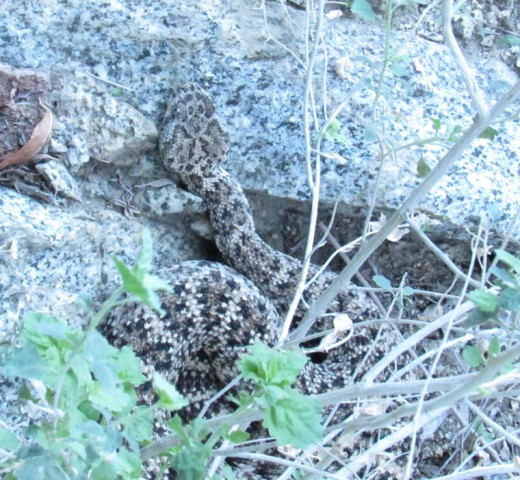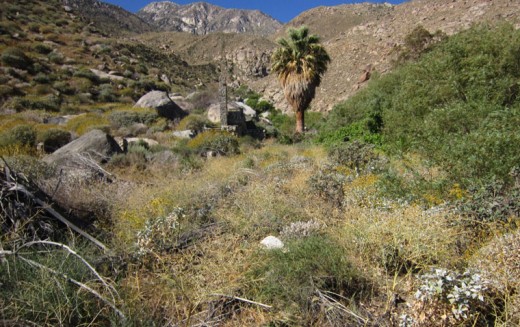
Photos by John Laundré
Many of our readers are familiar with the James Reserve from our writings and public talks. However, few know that the James officially consists of not only our site near Lake Fulmor, but a second site on the other side of the mountain in the northeast foothills of Mt. San Jacinto.
So I want to take some time here to introduce our “sister” site, Oasis de los Osos (Los Osos, for short). Why is it called Los Osos? As it turns out, oso is Spanish for bear and in the history of the area, a fellow by the name of Robert Bear donated the money to The Nature Conservancy to buy the property in 1987. It then deeded it to the University of California Natural Reserve System as part of the James Reserve complex.
And a fine addition it was. Together, the James and Los Osos represent the two extremes in climate and vegetation found in the region.
While the James is covered in relatively moist, tall pine-hardwood forest, Los Osos is a dry, low-shrub/grass area typical of the Colorado Desert that flanks the eastern edge of the San Jacintos. And therein lies the beauty of the relationship between the two sisters. Together, the James and Los Osos provide the researcher and the school groups an opportunity to study and learn about the vast and varied ecosystems that make up our mountain home here in the San Jacintos.
And Los Osos does this well. With an average annual rainfall of only 13 inches and summer temperatures above 100˚ F, Los Osos truly classifies as a hot desert. As a result, some of the more interesting things to learn are how the plants and animals that live there cope and survive.

And there are plenty of them that do. From the hardy California sagebrush (Artemesia californica) to the delicate scarlet monkeyflower (Mimulus cardinalis), more than 100 species of plants can be found at Los Osos. More than 100 bird species, from hummingbirds to eagles, fly over the desert vegetation. In excess of 30 mammal species, from shrews to coyotes, with a surprisingly high number of bat species (13), roam the area.
Not surprisingly, Los Osos is a reptile haven. Besides three species of rattlesnake, 24 lizard and snake species can be found there. This high diversity of plant and animal life, typical of desert areas, seems contradictory to the hot and dry conditions found there.
But that is the beauty and fascination of deserts. Unlike the closed canopy of a forest, the abundance of solar energy reaching the ground surface, along with a little bit of water, provides ample ways of making a living — we call them niches — for plants and animals.
However, not all is hot and arid at Los Osos. First, as we all know, being “down the Hill” in winter is actually quite pleasant. Add to this the occasional rains that fall in winter, Los Osos is a very enjoyable place to work and learn.
Next, and most important, like its name indicated, Los Osos is an oasis. Lamb Creek, named after early settlers of the area, is a perennial stream providing water to wildlife and enabling a narrow band of green, including a native palm tree (Washingtonia filifera), to grow along its banks. The presence of the stream, including a waterfall, adds another dimension to the research and learning potential of the area.
Side-by-side comparisons of moist and dry communities can be made. Studies can be done to show the importance of this water source to surrounding wildlife, from insects to coyotes and bobcats. It also provides a cool and peaceful respite for school groups coming to the area.
Although Los Osos plays a unique role in UCR’s research and teaching programs, we strive to help it reach its full potential. Toward this end, the director of the James and Los Osos, Dr. Jennifer Gee, applied for a planning grant to assemble a committee and hold workshops aimed at designing a five-year plan to improve the James and Oasis de los Osos reserves.
With the recommendations in hand, our next step is to apply for more funding from the National Science Foundation to make the oasis field site as attractive as the James. We hope our efforts will result in new scientific discoveries and open up young minds to the beauty and wonders of the desert environment that surround our mountain home here in Idyllwild.










